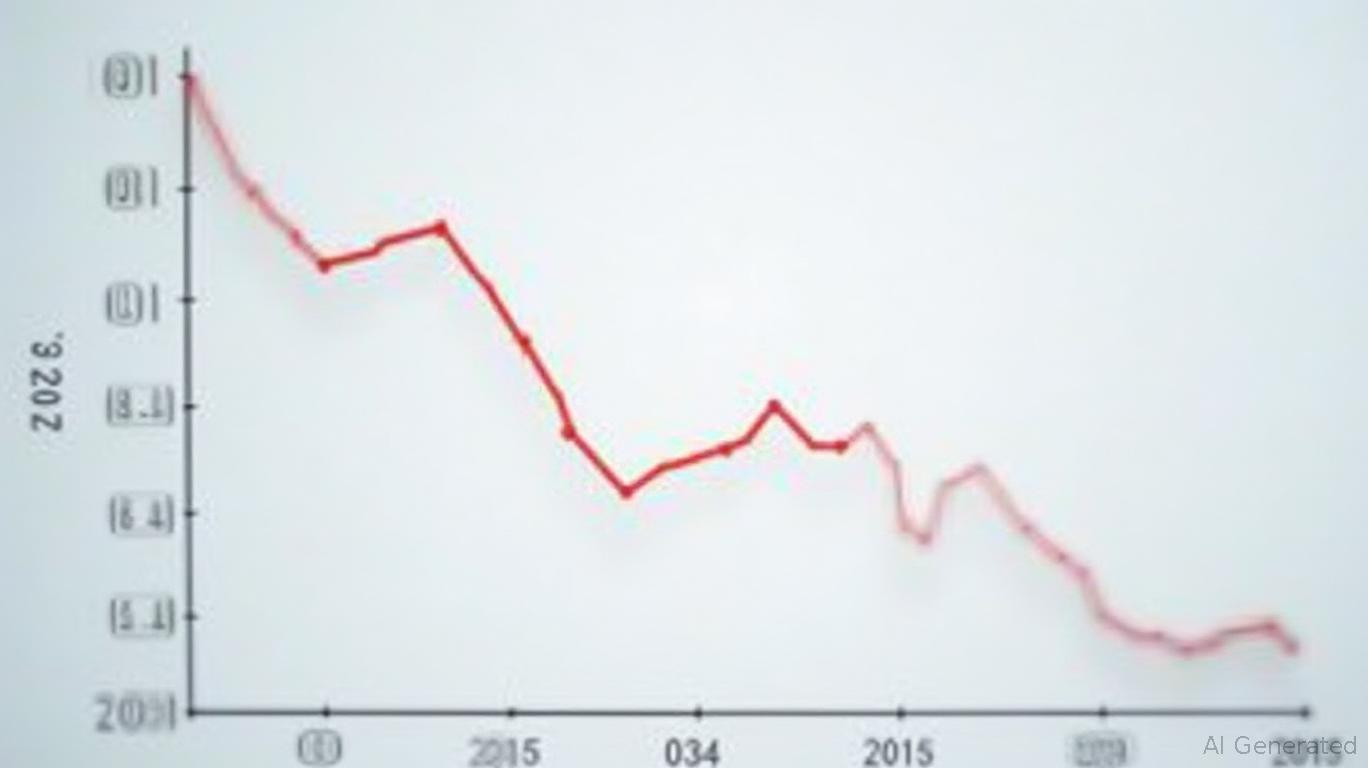Gannett (GCI): A High-Risk Gamble Amid Questionable Earnings and Deteriorating Fundamentals
Investors seeking stability and clarity in their portfolios should steer clear of
(GCI), a media conglomerate grappling with questionable earnings quality, declining revenue trends, and opaque financial engineering. While the company touts progress in debt reduction and digital growth, a closer look at its Q1 2025 results reveals a business model under strain, reliant on tax benefits and asset sales to prop up its facade of improvement. For the risk-averse investor, Gannett's fundamentals scream caution—its stock is a high-risk bet on a turnaround that may never materialize.Revenue Declines: Structural Weakness or Accounting Sleight of Hand?
Gannett's Q1 2025 total revenue plunged 10.1% year-over-year to $571.6 million, with “same-store” sales dropping 7.7%. The company attributes the decline to the sale of the Austin-American Statesman and the disposal of non-strategic assets—a strategy that masks deeper issues. While these sales removed drag from legacy operations, the same-store revenue drop signals underlying demand weakness in both its U.S. and U.K. divisions.
Even its “digital-first” pivot is underwhelming. Digital revenue fell to $250.4 million from $267.5 million a year ago, despite a 4.7% rise in monthly unique visitors to 195 million. Digital advertising revenue ($83.4 million) and subscriptions ($43.3 million) are stagnant, suggesting Gannett struggles to monetize its traffic. Management's optimism about a 7%-10% same-store digital revenue growth in 2025 clashes with its own Q1 results, raising doubts about its ability to execute.

The total revenue outlook for “low single-digit declines” further underscores a bleak reality: Gannett's traditional print and advertising businesses are collapsing, and its digital moats are unproven. Investors should ask: Is this a temporary slump or the start of a death spiral?
Tax Benefits and Earnings Quality: A One-Time Lifeline or a Habit?
Gannett's reported net loss narrowed to $7.3 million in Q1 2025—a $77.4 million improvement from 2024—but this “progress” is largely illusory. A $6.8 million tax benefit (versus a $10.1 million tax provision in Q1 2024) drove 90% of the improvement. The resulting effective tax rate of 92.9%—a jaw-dropping spike from 11.9% in 2024—is unexplained in the filings.
This anomaly suggests Gannett is exploiting deferred tax assets or losses to manipulate its bottom line. Meanwhile, its non-GAAP metrics, like Adjusted EBITDA ($50.5 million) and “free cash flow” ($10.2 million), exclude critical costs, such as interest on its $1.037 billion debt. These measures paint a rosier picture than reality: without tax breaks, Gannett's losses would be far worse.
The reliance on tax tailwinds is a red flag. As tax benefits fade, so too will Gannett's ability to “improve” earnings artificially.
Unusual Items and Transparency: A Black Box of Accounting Tricks
Gannett admits its Q1 results were skewed by “several items unique to the first quarter,” which it claims are now behind it. But what exactly were these items? The filings offer no specifics—no write-downs, impairments, or restructuring costs are itemized. This lack of transparency raises suspicions of accounting gamesmanship to shift losses into a single quarter.
Moreover, Gannett's debt reduction—$74.5 million in Q1—came at a cost. It paid $15 million for $14 million of its own convertible notes in April, signaling desperation to shrink leverage. The company also needed a lender waiver for its 2029 Term Loan Facility, hinting at covenant breaches. These moves suggest Gannett's capital structure is fragile, not fixed.
Debt and Liquidity: A Sword of Damocles
While Gannett's first-lien net leverage fell to 2.6x in Q1, its total debt remains a burden at $1.037 billion. With operating cash flow of just $23.3 million (up a meager 3.8% year-over-year), the company lacks the cash flow to service debt organically. Its “free cash flow” of $10.2 million is a fraction of its obligations.
The outlook's promise of a 30%+ rise in operating cash flow in 2025 hinges on revenue growth that has yet to materialize. If digital revenue growth stalls, Gannett's liquidity could deteriorate rapidly.
The Bottom Line: A High-Risk Gamble
Gannett's stock is a high-risk investment for three reasons:
1. Earnings Dependence on Tax Windfalls: Without the Q1 tax benefit, its net loss would have been catastrophic.
2. Revenue Deterioration: Same-store declines and stagnant digital monetization suggest a shrinking business.
3. Debt Risks: Fragile liquidity and reliance on lender goodwill leave it vulnerable to economic shocks.
Investors lured by Gannett's “cheap valuation” or digital pivot should think twice. The company's fundamentals are weakening, and its financial engineering—tax benefits, non-GAAP metrics, and opaque “unusual items”—masks the truth. For now, GCI is a speculative play, not a buy for long-term growth.
Proceed with extreme caution.

Comments
No comments yet